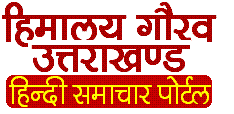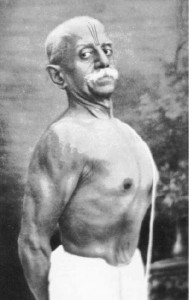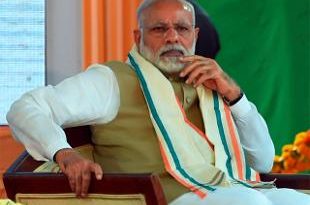सूर्य नमस्कार के प्रणेता- Pratinidhi Pant
सूर्य नमस्कार योगासनों में सर्वश्रेष्ठ है। यह अकेला अभ्यास ही साधक को सम्पूर्ण योग व्यायाम का लाभ पहुंचाने में समर्थ है। इसके अभ्यास से साधक का शरीर निरोग और स्वस्थ होकर तेजस्वी हो जाता है। ‘सूर्य नमस्कार’ स्त्री, पुरुष, बाल, युवा तथा वृद्धों के लिए भी उपयोगी बताया गया है।
आदित्यस्य नमस्कारन् ये कुर्वन्ति दिने दिने।
आयुः प्रज्ञा बलम् वीर्यम् तेजस्तेशान् च जायते ॥
(जो लोग प्रतिदिन सूर्य नमस्कार करते हैं, उनकी आयु, प्रज्ञा, बल, वीर्य और तेज बढ़ता है।
सूर्य नमस्कार में बारह मंत्र उचारे जाते हैं। प्रत्येक मंत्र में सूर्य का भिन्न नाम लिया जाता है। हर मंत्र का एक ही सरल अर्थ है- सूर्य को (मेरा) नमस्कार है। सूर्य नमस्कार के बारह स्थितियों या चरणों में इन बारह मंत्रों का उचारण जाता है। सूर्य नमस्कार योगासनों में सर्वश्रेष्ठ प्रक्रिया है। यह अकेला अभ्यास ही साधक को सम्पूर्ण योग व्यायाम का लाभ पहुंचाने में समर्थ है। इसके अभ्यास से साधक का शरीर निरोग और स्वस्थ होकर तेजस्वी हो जाता है। ‘सूर्य नमस्कार’ स्त्री, पुरुष, बाल, युवा तथा वृद्धों के लिए भी उपयोगी बताया गया है। सूर्य नमस्कार का अभ्यास बारह स्थितियों में किया जाता है, सूर्य नमस्कार के द्वारा त्वचा रोग समाप्त हो जाते हैं अथवा इनके होने की संभावना समाप्त हो जाती है। इस अभ्यास से कब्ज आदि उदर रोग समाप्त हो जाते हैं और पाचनतंत्र की क्रियाशीलता में वृद्धि हो जाती है। वेदों में सूर्य को जगत की आत्मा कहा गया है। समस्त चराचर जगत की आत्मा सूर्य ही है। सूर्य से ही इस पृथ्वी पर जीवन है, यह आज एक सर्वमान्य सत्य है। वैदिक काल में आर्य सूर्य को ही सारे जगत का कर्ता धर्ता मानते थे। सूर्य का शब्दार्थ है सर्व प्रेरक.यह सर्व प्रकाशक, सर्व प्रवर्तक होने से सर्व कल्याणकारी है। ऋग्वेद के देवताओं कें सूर्य का महत्वपूर्ण स्थान है। यजुर्वेद ने “चक्षो सूर्यो जायत” कह कर सूर्य को भगवान का नेत्र माना है। छान्दोग्यपनिषद में सूर्य को प्रणव निरूपित कर उनकी ध्यान साधना से पुत्र प्राप्ति का लाभ बताया गया है। ब्रह्मवैर्वत पुराण तो सूर्य को परमात्मा स्वरूप मानता है। प्रसिद्ध गायत्री मंत्र सूर्य परक ही है। सूर्योपनिषद में सूर्य को ही संपूर्ण जगत की उतपत्ति का एक मात्र कारण निरूपित किया गया है। और उन्ही को संपूर्ण जगत की आत्मा तथा ब्रह्म बताया गया है। सूर्योपनिषद की श्रुति के अनुसार संपूर्ण जगत की सृष्टि तथा उसका पालन सूर्य ही करते है। सूर्य ही संपूर्ण जगत की अंतरात्मा हैं। अत: कोई आश्चर्य नही कि वैदिक काल से ही भारत में सूर्योपासना का प्रचलन रहा है। पहले यह सूर्योपासना मंत्रों से होती थी। बाद में मूर्ति पूजा का प्रचलन हुआ तो यत्र तत्र सूर्य मन्दिरों का नैर्माण हुआ। भविष्य पुराण में ब्रह्मा विष्णु के मध्य एक संवाद में सूर्य पूजा एवं मन्दिर निर्माण का महत्व समझाया गया है। अनेक पुराणों में यह आख्यान भी मिलता है, कि ऋषि दुर्वासा के शाप से कुष्ठ रोग ग्रस्त श्री कृष्ण पुत्र साम्ब ने सूर्य की आराधना कर इस भयंकर रोग से मुक्ति पायी थी। प्राचीन काल में भगवान सूर्य के अनेक मन्दिर भारत में बने हुए थे। उनमे आज तो कुछ विश्व प्रसिद्ध हैं। वैदिक साहित्य में ही नही आयुर्वेद, ज्योतिष, हस्तरेखा शास्त्रों में सूर्य का महत्व प्रतिपादित किया गया है।
Parshuram Pant Pratinidhi
Bhawanrao Shriniwasrao Pant Pratinidhi ( October 24, 1868 – April 13, 1951), popularly known as Balasaheb Pant Pratinidhi or Bhawanrao Balasaheb Pant Pratinidhi, was the ruler of the tiny princely state of Aundh in Maharashtra, India under British Raj during the period 1909 – 1947.
His son was Indian ambassador Apa Sahib (1912-1992). He was a man of letters, an accomplished painter, and an erudite musical kirtankar. He presided over Marathi Sahitya Sammelan held in Indore in 1935. He also served [1] as the President of the Poona Sarvajanik Sabha.
Parshuram Trimbak Kulkarni (1660–1718 CE), popularly known as Parshuram Pant Pratinidhi, was a Minister (Pradhan) and Count (Sardar) of the Maratha Empire. He served as Pratinidhi (Chief Delegate) during ChhatrapatiRajaram and Tarabai’s reign. His contribution to the War of 27 years is considered to be of vital importance. He was also the founder of the princely states of Vishalgad and Aundh in Maharashtra. Parshuram Pant was born in 1660. His father was a tax assessor (Kulkarni) of a few villages around his native home of Kinhai near Koregaon in Satara district. At the age of 14, Parshuram Pant went to Vishalgad and started working under Ramchandra Pant Amatya as a clerk. Due to his steady progress both in clerical as well as military functions, he was soon promoted as Ramchandra Pant’s deputy and was sent to Vasota Fort to look after military administration Parshuram Pant exhibited his leadership qualities for the first time during the blockade of Panhala Fort in 1689 which was ultimately captured by Aurangzeb in the same year. Parshuram Pant, however, recaptured the fort in June 1692 with tremendous efforts and bravery. Thereafter, under the able guidance of Ramchandra Pant Amatya, he initiated continuous victorious campaigns against Mughal army and re-captured the large region between Miraj and the fort of Prachitgad (also called Rangna). He also captured Fort Bhudargad and Chandangad from Mughals.
Delighted with his performance, Rajaram honored him with the title of ‘Subha Lashkar’ and ‘Samsher Jung’ and later on conferred on him the post of Pratinidhi (Chief Delegate). On 31 October 1699, with the intention to create confusion and suspicion in the minds of Maratha Sardars, Aurangzeb wrote a secret letter to Parshuram Pant but arranged to reach it in Ramchandra Pant’s hand. It read, “It was great to hear that Parshuram Pant was joining the Mughal camp for a consideration that was mutually agreed upon.” Simultaneously, Parshuram Pant got a letter of same sort addressed to Ramchandra Pant. However, this trick could not work as both of them were closely associated with each other. During December 1699 to April 1700, when Satara fort was blocked by Aurangzeb, Parshuram Pant ensured non-stop supplies of food grain and ammunition to the Maratha army from Fort Parali. After Rajaram’s death in 1700, Parshuram Pant became right hand of Tarabai who sought his help in restoring her son Shivaji II on the vacant throne of Rajaram. In 1702, he fought for saving the fort Vishalgad continuously for five months and killed the 6,000 attacking Mughal soldiers. Ultimately, a Memorandum of Understanding was signed and the fort was handed over to Aurangzeb on 4 June 1702 after receiving a sum of Rs. 2 lac in tribute. Parshuram Pant would not get it back until 1707, however, just within a span of 3 years, he recaptured other forts like Panhala Fort, Pavangad, Satara and Vasantgad.
n 1707, Shahu was released by the Mughals and the civil war between him and Tarabai commenced. Unlike many others, Parshuram Pant remained loyal to Tarabai and fought against Shahu but was defeated and subsequently imprisoned. In 1710, he was released and was earnestly requested by Shahu to assume the post of Pratinidhi which he did with little hesitation. Even though he was granted a separate feudal estate (jehagiri) at Aundh near Karad, he was allowed to keep his existing jehagiri at Fort Vishalgad as well. His disobedience, however, compelled Shahu to put him in prison twice during 1710 to 1714, but subsequently, he was released and restored after settling some disputable issues. Being a genuine devotee of the Hindu Goddess Yami, he wrote a few poems praising the goddess and received great respect and honor until his death in 1718. His son Shrinivasrao alias Shripatrao was appointed by Shahu to succeed him.
Presents by;
HIMALAYA GAURAV UTTRAKHAND ; www.himalayauk.org
(Leading Newsportal & Daily Newspaper)
Publish at Dehradun & Haridwar. Mail; csjoshi_editor@yahoo.in, himalayauk@gmail.com
Mob. 9412932030; CS JOSHI- EDITOR
Availble in: FB, Twitter, whatsup Groups (Lic. by TRAI), & all News Websites.




